January 2020, Week 2
Okiedawn OK Zone 7
4 years ago
Featured Answer
Comments (50)
hazelinok
4 years agolast modified: 4 years agoAmyinOwasso/zone 6b
4 years agoRelated Discussions
January 2020, Week 1
Comments (56)Moni, Tim and I think the cedar trees started pollinating here about 4-6 weeks ago, which of course is so much earlier than usual, so maybe what I should have said is that they might be peaking now. There is a property next to us that has a solid couple of acres of them just about as thick as grass, and another that has probably 45 to 60 acres of them not quite as thick. While many of us try to cut them down and keep them to a minimum, many others just let them run wild and reseed all over, so we have a shocking number of cedar trees around here. I'd been trying to stay away from taking allergy medicine, but it is time to take it daily again. Amy, I know! I was so happy to be over the flu and feeling good again, and then here come the allergy symptoms after just a few days of feeling really good again. I even told Tim that it felt like cedar season had begun, but surely not....and I believe that was in late November. So, the next time we were out, we looked at the cedar trees and were stunned by have heavily laden they were with pollen. I am going to guess that the early autumn freeze followed by several periods of warm weather got the cedar trees going early again. I think this is the third year in a row cedar pollen season began early. I can't help thinking an early start to the pollen season is just another complication for anyone with allergies who also is dealing with the flu, a cold, bronchitis or pneumonia. There's also been a lot of strep throat going around. I suppose it is just that time of the year. Tim, Chris and Jana all are exposed to tons of sick people in the jobs on a daily basis, and I'm not, so usually I'll get sick once and that's it and they might get sick more often, but they also bounce back more quickly...especially Chris and Jana since they still are young and probably have more robust immune systems. This winter the kids have been perfectly healthy. Aurora had a cough for a couple of days, but it lasted no time at all, and Lillie hasn't been sick at all. Perhaps they are just old enough that they aren't bringing us every virus they encounter any more. I do remember what it is like with infants and toddlers who seem to have a runny nose more often than not at this time of the year. I did see that meme about seed buying and seed planting and it made me laugh out loud. The seed buying....that is the dream, right? The seed planting, though, that is the actual reality. Some gardeners live more in the dream and others live more in the reality, and most of us have some sort of combination of both the dream and the reality. I have really, really cut back on the seed buying, but still have a huge accumulation of tomato seeds from past years. With everything else, from veggies to herbs to flowers, I've stopped buying more than I can plant, and am trying harder to plant all the ones I buy. So, at least I'm partially reining in the seed madness. This is the first year I haven't ordered a single veggie or tomato seed, and most of the flowers I ordered were wildflower seeds. It feels odd to not have seed deliveries flooding in. Because of the landscaping projects, I suspect I'll be buying more plants than seeds this year, which is a big change. Kim, I'm glad you're getting all settled in and ready to have a big garden again. I know how much you've missed having that garden. Jennifer, Last year we bought the orange storage tubs for all the autumn, Halloween and Thanksgiving décor and I am so glad we did. It was so easy to spot them and pull them out immediately when it was time for autumn decorating and I was thrilled with not having to figure out which tub in the attic had which stuff in it. So, this year, we bit the bullet and invested in the red ones for the Christmas décor. I am so excited to have them, and they immediately made me feel more organized. We are going to recycle the previously used gray storage tubs to the garage to store Tim's junk. Did it hurt to go out and buy all these red storage tubs right after Christmas at full price? Of course it did, and the miser who lives inside my head kept telling me to wait another 2 or 3 weeks and they'd be on clearance, but I couldn't do it. I wanted the Christmas stuff taken down and put away promptly. I do consider them a worthwhile investment because they'll keep us organized and save time and frustration each year when it is time to bring out the holiday decorations. We even moved the 2 artificial Christmas trees from their old, torn, tattered and taped up original cardboard boxes to the red plastic tubs. I believe overall it will simplify our lives and decorating a lot. Rebecca, I'll see if Chris and Jana want to come to the Spring Fling. They both usually work on weekends though, so it is the luck of the draw, schedule-wise. You know, I am sure that back in the fall he sent me diagrams of his plans and I know what he intended to plant, but for the life of me I cannot think of any of it. I know they are more interested in blooming perennials than shrubs or trees, and they invested heavily in bulbs of all kinds, especially lily and daylily bulbs. What happened with those....Chris was visiting websites and making lists in May or June of all the lilies and daylilies he wanted for the yard. He'd show his lists and the photos to Jana and she'd add some others she liked. Then, at some point, he thought he read where they said that sales were closed for summer 2019 and they wouldn't ship again until fall 2019, so he ordered a ton of lilies and daylilies on sale, expecting them to ship in the fall. Well, somewhere there was a misunderstanding and tons of bulbs started arriving in the mail very soon thereafter, and they had nowhere to put them. So....molasses feed tubs to the rescue! We took him 6 or 8 of them, he filled them up with soil-less mix, packed in the bulbs close together since the tubs were just their temporary home, and the lilies and daylilies have been happily growing in them ever since. Now he is ready this month to move all those to the planting beds he created in his front yard this week. I believe that this week he planted his carefully selected mix of tulips, daffodils, hyacinths, crocus, anemone, guinea hen flower, red fritillaria, and whatever else he ordered. Back to the lilies...Once he knew he could temporarily plant them in the molasses feed tubs, he went back and ordered more lilies and more daylilies on sale all summer long, so now he has amassed an army of lily and daylily bulbs, ready to move to the garden whenever he has time to transplant them. I'm not even sure he has room for all of them, much less anything else. It is possible that Chris is a gardening maniac who wants to plant it all, and we didn't even realize that before he bought the house. They have specific rose varieties picked to plant this spring, etc. They really did their planning last spring while it was raining every day, and that carried over into summer along with all the bulb purchases, and then this week they built and planted the first two beds. He said they've been stopping traffic because everyone in their neighborhood wants to see what they are doing to replace all the lawn grass they've torn out. Moni, To label our tubs, I tape clear plastic page protectors to them. Then, we can slide a sheet of paper inside the page protector on each tub and, if the contents change, we slide out that sheet of paper and slide in the new one. I write on the sheets of paper with black permanent markers. I'm the most organized I've ever been, but it has taken me 60 years to get to this point. Now, if only we could apply all the great household organization techniques to Tim's garage/shop, where junk just piles up. When we were younger, he knew where everything was from memory. It would amaze his friends. Some friend would stop by and say "do you have a whatever..." and he could go straight to a location and get it in the blink of an eye. Now he stands there and looks around and says "it is in here somewhere". Then he has to dig and paw through everything to find it. So, just like last year, cleaning out/cleaning up/reorganizing that building is on our To Do list, and I hope we have more success with it in 2020 than we did in 2019. Larry, I hate that the mud is slowing you down. It is the same here...mud everywhere. I hope you and Madge recover quickly from the bug you have. I'm hoping the mud dried up before spring. We cannot rent a sod cutter and remove all the Bermuda grass until our clay dries out more. Right now it is so wet that I fear the sod cutter would bog down in the wet soil and get stuck. It is hard to have just the right conditions for cutting sod....you need the soil a bit moist, and certainly not rock hard like it is in the summer, but you don't need it wet and soupy like it is right now. I look at all the mud and puddles and just roll my eyes because I'm so tired of looking at all of it. We need to get Elvis to come spread a new load of gravel on the driveway, but it is in the same boat---probably too wet to be workable at this point, so we need it a bit drier so his equipment doesn't bog down in the mud. The good news is there is no rain in our local forecast until at least next Thursday, but the bad news is that the ground dries up so slowly in the lower temperatures and less intense sunlight in the winter. Jennifer, I have no idea what lights we have because Tim chose them while I was elsewhere in the store doing something else, but I know he bought LEDs and they are nice and bright, but the lights themselves stay cooler than the other ones we had before and don't build up a lot of heat, and you can put more strings of them together since they use less energy. It is good to see your little Brussels Sprouts. Yay! I've been working on my tomato grow list and it is an unbearable form of torture to keep chopping it down smaller and smaller. I was aiming for only 6-8 varieties since they are going to be grown in containers, but I think that when I'm done with it, it will be closer to 12 varieties. There's just no way to make it any smaller if you factor in needing a couple of cherry types, (I could do only one cherry tomato plant, but how can you choose between SunGold and Black Cherry?), some blacks/purples, some pinks, some reds, at least one orange (Tim's favorite Nebraska Wedding) and a couple of late types for production in late summer and early autumn....then 10-12 varieties is the bare minimum. I think if I can cut the list to 10-12, then I will have done really well when you consider my usual long grow lists. Rotating all the nightshades out of the front garden this year and next as a form of crop rotation means growing no potatoes this year. I don't like growing tomatoes in feed tubs, and there's nowhere else to grow them where voles won't get them. (Voles will go up through the drainage holes in the feed tubs, but only for potatoes....not for tomatoes or peppers.) I am feeling iffy about using the back garden at all with all the other stuff we have going on because, realistically speaking, there's only so many hours in the day for planting and maintenance,, so there likely won't be many other veggies. Probably onions, cucumbers, beans and southern peas, maybe all squeezed into one raised bed in the front garden, with all the surrounding beds filled with flowers. That means that onions will be the only cool-season veggie, and I am okay with that. Oh, maybe kale and lettuce. See there....cutting back is impossibly hard. Anyhow, I'm going to finish my tomato grow list and post it in the next few minutes. I've been working on it all week. I went through the seed box, pulled out all the packets of tomato seed that I wanted to plant, then began editing that big pile down to an ever-increasingly smaller pile. I piled up the seed packets in groups by color, then had to choose our favorites from each color, and while doing that, I tried to take into consideration which ones produce early, mid-season and late, as well as which ones' flavor we absolutely, positively must have this year. Ultimately I put back tons of seed packets into the seed box, and ended up with the ones that made the final cut this morning. It is odd to not plant any paste tomatoes, but not planting them is essential if I am to have the year off from canning (still gonna make pickles though) so I can focus on the landscaping projects. If I had more self-discipline and didn't love all the various types of tomato flavor so much, I probably could cut the current tomato grow list in half, but I lack that self-discipline and enjoy the wide variety of flavors too much to do another round of cutting. As it is, we'll probably have twice as many tomatoes as we need for fresh eating, but then I can just whip up tomato-basil soup or fresh pasta sauce for dinner when too many tomatoes start piling up on the counter in the summer time. Dawn...See MoreJanuary 2020, Week 4
Comments (48)So, I'm back now to read thoroughly and try to respond. Amy, I do treat lima beans pretty much like snap beans except for planting them slightly later since they are heat lovers and I'm using them to fill that legume role after the snap beans are pretty much done. I have tried planting lima beans at the same time as snap beans, and in my location it doesn't work out well. Maybe that's our cool spring microclimate getting a bit colder at night than the lima beans like or something, so I tend to plant them about a month or six weeks after snap beans. However, I plant snap beans sort of on the early side to beat the heat and the spider mites, so maybe the limas just don't tolerate being planted too early as well as the snap beans do. One thing I do ponder is this: if I have snap beans, the spider mites are going to show up on them...sometimes insanely early. Why, then, do the spider mites not bother the lima beans at all? Beans are beans, right? I wonder if anyone has researched this. We are not big fans of celeriac either. We have tried it, but about the only way I use it nowadays is chopped up in a big pot of vegetable soup. I don't blame you for being mad at Wal-mart. Ours never has enough electric carts for all the folks who need them, and they've taken out the benches they used to have at the front of the store. I guess the benches got in the way of one of the little banks, or the vet, or the hair salon or whatever that now populates the front of the store outside the checkouts. I fight the blahs in dreary, cloudy winter weather too. I need sunshine! This winter has been tougher than most because the sun has been hiding behind the clouds almost every day, and often (I blame the warmer temperatures for this) we have had fog until noon. I feel like we've sort of had Pacific Northwest weather this year with all the incessant fog, mist, clouds and drizzle and I have not liked it at all. Jennifer, In my garden, beans as a group are relatively pest free, except that the spider mites really love them. Some years the mites arrive early and are horrible, and other years the beans pretty much finish producing before any spider mites arrive at all. You might see occasional damage from Mexican bean beetles. I will see a little of that here and there, but not enough to worry about. Some years, if there is a heavy population of stink bugs (like we had last year), they will be on the beans. I have noticed that southern green stink bugs are more of a pest on beans than the brown stink bugs are. I run across the green stink bugs on the plants when harvesting beans so I try to always have my garden scissors with me so I can snip those stink bugs in half. (Don't squish stink bugs with your bare fingers unless you want for your fingers to stink all day long, even after you have thoroughly washed them.) Because you have coyotes in your neighborhood, I would not have a miniature cow unless I also had a guardian livestock dog (like a Great Pyrenees, for example) to protect the cow from the coyotes. Or, maybe a donkey. Donkeys are great at protecting livestock as well and even will take on large dogs and cougars to protect their herd. Okmulgeeboy, I have grown a gazillion types of beans over the years. There are hundreds of varieties available commercially and it has been fun to experiment with all the different kinds. If a person is going to binge on something in the garden, beans are a fun crop to experiment with. I do not grow dry beans. They are so incredibly cheap to buy in bags at the store, or in bulk at some stores, that they just are not cost-effective to grow in the garden by comparison. That's why I don't grow pinto beans or black bean, and I always harvest our southern peas green, not leaving them on the plants to dry. I prefer to use the garden for fresh legumes that I can harvest weekly, and then either snap or shell, and eat fresh. We just freeze the excess for winter when I grow more than we can eat fresh and that is possible because we have three freezers in the garage, though all of them are not full year-round....one of them usually empties out as we devour our fresh-frozen food over the course of the fall and winter months. Then, as soon as the harvest starts in Spring, I refill that big freezer with garden produce over the course of the growing season. It is a big chest freezer divided into compartments by blue plastic dividers, so I fill each section with a different veggie, which keeps it organized and makes it easier for me to find what I want when I'm removing frozen produce from the freezer to use in meal preparation. Larry, That is great cow advice! Rebecca, I have hesitated to try to put words to how I feel about this year's winter/spring weather because I am getting mixed feelings about it. Does that make sense? I don't have a strong feeling that we will have late cold weather. I don't have a strong feeling that we will have early warm weather. It all just feels sort of "blah" in my brain. Good heavens, I hope I'm not losing my garden intuition as I age! That would be terrible. So, my best guess based on my garden intuition is that we are going to warm up early in general, but need to watch carefully for late rounds of cold weather. We aren't going to warm up extraordinarily early. You know, there have been some years when January was so warm that I actually put tomato plants in my 4' round galvanized metal stock tank in February...around the third week of February, and I did so expecting they would do well and would produce early and they did, though I had to cover them up on 2 or 3 cold nights. Well, this is not one of those years. It doesn't feel the same as those years. This is more of a middle-of-the-road year. I want to believe it will warm up early and stay warm, but there is a little voice inside my head (picture a miniature Three Stooges type guy jumping up and down in my brain, yelling at me to get my attention) warning me not to get into too much of a hurry to plant too early. Do I wonder where that voice is coming from, given than the signs around me outdoors have been hinting at an early Spring since at least December? Of course I do. I've learned not to question the voices in my head (hope I don't sound like a schizophrenic here) because they are coming from somewhere I cannot explain. I just know that when I follow my intuition, things tend to work out well in the garden. So, I'm not getting in a big hurry with anything, but I'm also not going to drag my heels too much and start seeds too late relative to the weather we are having. I have wondered if my garden brain is being lazy this year because I'm not planning on a big veggie garden? Because I'm rotating my favorite crops, all the nightshades, out of the front garden and replacing them with a lot of flowers as a form of crop rotation, am I losing my focus and not listening to my usual garden-planting intuition? I suppose that is a possibility. However, I am strongly feeling the urge to plant veggies even though that really is not supposed to be a part of my gardening in 2020 since I want to focus on renovating our landscape. I'll talk about that more sometime this week in the Week 5 thread as there are some rational reasons for that, and maybe one irrational one. So, now I'm thinking the front garden won't be 100% flowers and herbs. Maybe it will be 60% flowers and herbs and 40% veggies. We'll see. I promise that when I am starting seeds and planting and transplanting, I'll say so, and just by my actions y'all should be able to see if I'm feeling an early spring sneaking into the garden...or not. Early for me is much earlier than early would be for those of you further north, so if I start things early or on time, you all still have plenty of time to start things early too (and Jennifer is ahead of me this year, I've noticed, and there is nothing wrong with that--I think she is listening to her intuitive garden brain too.) My biggest fear as an intuitive gardener always has been that my garden intuition will fail, one of these years, to send me the right messages and I'll plant too late, but it really hasn't happened yet, so I try to listen to the voices in my head and behave correspondingly. This year, as usual, I expect to start seeds on Super Bowl Sunday....which is next week! Yikes! In a way it is sneaking up on me, but I already have seed-starting supplies and seeds on hand, so I'm ready to start the seeds next Sunday even though it doesn't really feel to me like it should be Super Bowl Sunday yet. I have one plant shelf set up indoors (long story) and the actual light shelf is going to be set up, hopefully today, in the mudroom, so it will be ready for next weekend's activity. Jennifer, I will go find the outlooks and link them, but the last time I looked at them, which I think was early January, they were showing February warmer than usual overall, and were iffy on the rain---no real hint there. At the time I checked them, there were equal chances of us having above average rainfall in February, average rainfall in February or below average rainfall in February. When they put up the EC on the map to indicate Equal Chances, I think that normally means their models are in disagreement so they cannot conclusively predict what might happen. Let me go retrieve the latest outlooks now. This first link shows the quarterly climate outlooks for temperature. Essentially, the tan or brown areas are showing above average temperatures, white will show average or equal chance type temperature forecasts, and if they were showing blue, that would be below average temperatures. Is it scary to anyone else that all the long-term outlooks consistently show us above average? Seasonal Outlooks Now, here's the rainfall outlook. Overall, I find the temperature outlooks to be more reliable than the rainfall outlooks, but since they prepare the rainfall outlooks, I want to post them as well. I'll tell you in advance that there is nothing in the rainfall outlooks that strongly hints at a wet year....and, yet, many of us have had a very rainy January, so I feel like there are mixed signals here. Quarterly Rainfall Outlooks Okay, I'm out of time and need to go make breakfast before it ends up being brunch. I'll be back later to finish catching up. Dawn...See MoreFebruary 2020, Week 2
Comments (84)dbarron, I'll probably have to start all mine indoors too. Then I'll build the plants little boats and they can spend the rest of the spring and summer floating downhill, slipping through the garden fence, slipping and sliding across the front wildflower meadow and sliding happily down the embankment into the bar ditch, and then they can travelthrough our creek until they end up floating down the Red River. Maybe they'll wave bye as they float away. That is how discouraging all this rain is. I already can visualize my plants floating away before I've even started seeds. Yesterday when everything was frozen solid, our soil looked dry. It looked so good from inside the house, though walking on it wasn't that great when I went outdoors. Then the frozen ground thawed out during the morning hours and turned back into mud. I'd start hoping for drought, but I've been watching the videos of the 400 million locusts destroying Africa and headed into Asia, and I don't really want a drought because that's when our grasshoppers try to turn sort of locusts. Although... I should point out that it was a couple of rainy years that have given rise to the plague of locusts there in Africa, and we have had more than a couple of rainy years here....and I saw grasshoppers hatching out and growing in both December and January. I haven't seen many lately, so I'm hoping they drowned in the rain. It is just so wrong to have grasshoppers here in the winter, and in previous years when they were hatching out in the winter, we had a horrible problem with them all summer long. Those usually were drought years though. Jen, There have been years I've grown too much basil and I'd say you're about to have one of those years! The good thing is that it is a great companion plant and if you truly have too many plants taking up too much space, you can cut them back relentlessly....and they'll grow right back. If you have more than you can use, and more than you can dehydrate or make into pesto, you can use basil as fillers in bouquets, or tie together a lot of sprigs artfully to form a swag to hang up in the kitchen...and it will perfume the kitchen for ages. Larry, The wading pool idea sounds like a winner to me, but wouldn't work here because the 4 kittens would think it was just a big kitty litter box. I already have trouble keeping them out of the houseplants. Nancy, I always had too much lemon balm, but I just pulled out excess seedlings or dug up excess plants. I figured I'd never be rid of all the lemon balm. Then, in 2015 we got around 79" of rain and the perpetually wet soil finally killed the lemon balm plants. I was not sorry---for once, having dense wet clay was an advantage. Every now and then a lemon balm plant will pop up here or there in a raised bed, but not in great abundance like we once had, and that is a relief. Chris has been building the raised beds for their potager garden in their back yard, and he's just had to work around the rain. He has it about half built. I think he'll get the other half built this week. He needs to---he has seeds started and tons of plants all over the place and they are going to outgrow his light shelf soon. We are praying for an early last freeze so he can get those babies in the ground. He is at a much higher elevation than we are, so he probably will be able to plant before we can even though he is further north. Microclimate is everything. This morning, the nursery delivered his dump truck load full of garden soil that he intends to use to fill the beds in the potager garden. He's already dug out and removed all the grass from the potager garden area, which wasn't too time-consuming since he has loose, sandy soil. Anyhow, his driveway is fairly narrow and slopes sharply uphill and they didn't think the dump truck could back up that driveway with the load of heavy, wet garden soil, so they dumped it at the base of the driveway, covering his driveway, the sidewalk and a great deal of the yard. Ooops! Wanting to clear the sidewalk off and regain use of the driveway, he and Tim spent a long, hard few hours pushing wheelbarrow load after wheelbarrow load of heavy, wet garden soil up the steep driveway. That effort got it to the top of the driveway, but they couldn't wheel it into the back yard because it is incredibly wet (of course). So, they spread out the soil in heaping piles, covering up about half their driveway--the upper half, which leaves the lower half available to park their vehicles. Chris is hoping the soil will dry out quickly on the concrete, and then he can load it up again and wheel it into the back yard. The important thing to him is that the rest of their driveway is usable and the sidewalk is clear. The two of them went to lunch afterwards and had a nice father-son day together, and I predict both with be sore and achy tomorrow. I was home with our animals, letting them in and out as it pleased them, and doing housework and stuff. I didn't really want to shovel and haul dirt uphill so was smart enough to stay home. The cats and dogs were happier today, but we still have a ton of puddles and mud. Amy, I'd be happy if I only had to go to one store, but since we occasionally drive all the way to the metroplex to go to Costco and Central Market, I make a list and we stop at every other store we need to visit so we are getting the most bang for our buck after using all that gas to drive down there. It drives me crazy, though, and I cannot get out of the metroplex and back home quickly enough. It doesn't even matter if we only go to Gainesville or Ardmore, I've still had 'enough' of it after one store and just want to rush through whatever else we need to do to get home. Rebecca, Your poor nephew! Tim was about the same age when he slammed, face and teeth-first into a tree while sledding, and much expensive dental work ensued. I'd say an early Spring definitely is happening overall, even though we still have occasional nights in the 20s. All our Spring birds came back around 4 weeks ago, and everything here is sprouting, budding and leafing out, including trees. We went from sort of 0 mph to 60 mph overnight. I am sure more cold nights, and the threat of snow, will keep Spring from plowing ahead too enthusiastically, but she definitely is here. I noticed today that trees along the Red River are really leafing out now, though ours here at the house are a bit further behind and are only either flowering or budding. For those of us with allergies, I am sure the pollen counts are about to go off the charts. Jennifer, You do have a long list! I have a perpetually long list as well. The Stone Barn at Blueberry Hill surely will have blueberry plants, won't it? Otherwise, why the name? Some people have success with blueberries here, as long as they amend the soil to very acidic levels and put in an irrigation system to pamper those plants through our long, hot summers. The further northeast a person goes in this state, the easier it is to succeed with blueberries. Regardless, whether they have blueberry plants or not, I'm sure it will be an awesome place for a wedding. Hopefully Diana will adjust in the long run. She just may need time. Some cats take a long time to relax and calm down and become comfortable. We have a busy day planned tomorrow, but Monday I plan to be out in the garden at least doing some garden clean-up and weeding. I may have to carry out a sheet of plywood to put down in the pathway to kneel upon so I'm not soaking wet and muddy, but I've done that in the past and it has worked pretty well as far as keeping me above the mud. The next couple of days will be nice, but then the rain comes back. Honestly, can we not have one single week without rain? I'm so over it! Dawn...See MoreApril 2020, Week 2
Comments (79)Jennifer, We have been having more fun than a barrel of monkeys with the girls. It has been the most wonderful 3 days, and today will be the fourth. Then, everything gets back to normal again as the work week/school week start up again tomorrow, but at least we got to spend some time together. The girls have been totally exhausted by the end of each day. Tim and I have been totally exhausted by the end of each day. See a trend there? lol. Having their youthful exuberance around just seems to infuse the house (and us) with more energy. When the girls get home, they are going to have a big surprise this afternoon and I'll tell y'all about it later. I wouldn't want to ruin the surprise by having one of them walk in and start reading over my shoulder. All of you who are looking for seed: buy what you can now, and save what seed you can save from open-pollinated varieties. If this is like 2008-2009 all over again, then it is the second year of the economic downtown that was the worst then and could be the worst this time around too because new gardeners planned ahead better and ordered seed online earlier the second year after having so much trouble finding it the first year. I already have a horde of seeds set aside for 2021, and now I'm going to start buying for 2022. It can be very helpful to be thinking ahead and preparing ahead of the curve. I went to look at Renee's Garden Seeds' website a couple of days ago just to see how they were doing, and I don't think I've ever seen so many varieties sold out before summer even arrived. It was just nuts. If I didn't already have a collected seed stash for Fall 2020 (remember you can grow a ton of root and leafy crops this fall to help you have fresh produce in the fall and winter), I'd be feeling somewhat concerned that I wasn't going to be able to find the specific varieties I want. Not that the world would end if I couldn't find my favorite varieties---I'd just grow other varieties, but prefer to have the tried-and-true varieties that I know I always can count on. In some ways, the run on seeds may worsen over the next month or two as people in the northern tier of states finally get some decent weather and decide to plant a garden in May or June. I'm not saying they'd have success from one started that late in a short summer area, but that doesn't mean they might not be buying up the seeds to try. Now that some stupid states are saying seeds are non-essential and cannot be sold in big box stores, the online seed companies are going to get even busier. Nancy, Back in the year when our overnight forecast low of 50 gave us a surprise freeze and frost at 32 degrees, I lost virtually everything in the garden, including tomato plants that were knee-high. I did have about 4 True Black Brandywine tomato plants at the highest point of the garden that survived. In instant freak-out mode, I ran to the store and bought whatever tomato plants I could find. It was pretty late in the season, and I didn't have a lot of options, but I figured any tomatoes were better than no tomatoes. I did the same with pepper plants. Then, I came home, cut off the frozen plants at the soil level and planted new tomato plants in between the old, dead plants....so they alternated, dead plant, live plant, dead plant, live plant, etc. Lessons I learned: 1) It is good to not pull up dead plants by the roots because if they were old enough and well-rooted enough, they may resprout from the ground. My tomato and pepper plants both did, and because the root systems already were pretty large, they outgrew the newly purchased plants. 2) Any tomato variety you can find and buy is NOT better than nothing. We had a lot of hybrid varieties that produced reddish, roundish, baseball-sized looking things that claimed to be tomatoes. They had horrible texture and firmness (hard) and mealy flesh (yuck) and poor flavor. Their skin was tough. They were roughly the equivalent of grocery store tomatoes despite being grown in an organic home garden. Clearly they were bred for people who think any red round thing is a passable tomato and they weren't bred for flavor. They were bred for something else....and I suppose shelf life was that something else. To our picky palates that were used to eating a huge variety of open-pollinated tomatoes, those things were just horrible. They were fine, though, for making home-canned paste sauce or salsa because you add enough to those cooked products to make up for the poor flavor. Oh, and lesson number 3 was to never really trust the forecast, and to buy and use tons of frost blankets. I haven't lost a crop like that since then. Larry, I need to go for a long drive in the worst possible way. I think it would be great just to get out of our little world here and go somewhere, anywhere, for any reason at all. Tim doesn't feel the cabin fever burning like I do, likely because he "gets" to drive to work in Dallas 5 days a week, but I haven't left our little area in more than a month, not even to go to someplace a close as Sherman or Denton Texas, which are maybe 50-60 miles one-way, depending on where we're actually going in those cities. Maybe next weekend we'll do that because the girls and I have science experiments and other fun already planned for today. I'm pretty sure Tim is going to mow the lawn while he has the chance, if it isn't raining. The last time I looked, we had a 20% chance of rain for today, so I think the odds are that he'll get to mow. It was sad to realize it was Spring Fling day, but Tim and I had planned from the beginning to skip it so we wouldn't potentially carry Covid-19 germs from him, because of his work at an international airport, to y'all, so it wasn't that tough of a day for me....since I didn't expect to be able to attend it this year anyhow. There's always next year, so let's think positive and hope for the best. Kim, I'm glad your green babies are resprouting. I started my tomato seeds super late because we were continuously under water for months, and then Tim dropped a whole flat of them while they still were pretty small in the starter flat. Many of them lost their labels at that point, so now I truly have no idea what I have. I saved all the ones that were salvageable, potted them up, and have plants that are a decent size now but most have a ? on the label where the variety name ought to be. I hope when I plant them that I don't plant only cherry types. lol. Mine are ready to go into the garden except they aren't hardened off. I will start that today. I had started it a while back and they were up to 3 hours a day when the cold came back. Since I already had so many other flats of other plants outdoors that needed to be carried back indoors on the cold nights, I stopped carrying out those tomatoes and figured I'd just start over with hardening them off after the cold weather was done with us. So, I think the cold weather is done with us now, and I'll start hardening off the tomatoes again beginning today. The hardest part, though, is that we are staying mostly cloudy, so they are going to be hardened off more to cloudy/partly sunny weather than fully sunny weather. I bet you are having fun gardening with the kids and grandkids. I'd love to do that, but am very hesitant to have our granddaughters out in our garden with all the timber rattlers and copperheads that we have around here. I'd rather be out in their garden with them in their city yard where apparently, so far, there are no snakes. We'll go into our garden to look at everything, but I spend my whole time out there watching their feet to make sure they don't step on a snake. If there was such a thing as truly snake-proof fencing, I'd pay any price to have it so I could make our garden safe for the grandkids. I cannot imagine what your little man did to wear himself out enough that he needed 3 naps! I hope you enjoyed your 12-hour nap, especially since he gave you permission to take such a nice long nap. Rebecca, I'm glad your plants survived the cold snap. Thanks for the report on Lowe's. I'll continue to avoid it a while longer, though perhaps our country one wouldn't be as busy as one in the city. On the other hand, the Lowe's in Ardmore is the only one around for several counties. so people from some counties close to us (where there's a lot more coivd-19 cases than in our county) might be driving to it, so a person cannot just assume everyone there is safe to be around. When I'm finally able to step foot inside a big box store's nursery/garden center again, Tim's not going to be able to drag me out of there until I have a cart so loaded down with plants that I cannot squeeze in one more thing. Texas is trying to reopen stuff as early as next week, so I'll be watching their news to see if another round of new cases starts appearing 2 or 3 weeks after they reopen more stores and such. Jen, It sounds like the folks running your Lowe's had done a lot of preparation and planning and were ready to make safe shopping as little of an ordeal as possible. Kudos to them for that. The thought of a line wrapping around Walmart horrifies me, but it is the reason we aren't even trying to go to Costco or Sam's Club as I've seen their lines on the news. Our little country town Walmarts in this area probably aren't having lines like that or I think I'd see it on the news or on our FB shopping group where people share exciting news like "The Wal-Mart in Gainesville has toilet paper, bottled water and lots of meat!" or whatever. No one has even mentioned any lines anywhere, so I assume there aren't any. One thing I've learned from this group is that all the little mom and pop type stores in little towns scattered around the area have a much better supply of everything than the larger grocery stores frequented by large numbers of people, so I've filed that tidbit of info away from whenever I need something from a store. Melissa, It is so good to see you here. I hope your husband and daughter can stay safe throughout this public health emergency. My daughter-in-law works at the hospital in Ardmore, although not on the floor where they have Covid-19 case, if any, or even the suspected Covid-19 cases they're waiting for tests to clear. I worry about her but she's doing fine so far. Your poor daughter---my heart hurts for her too. She is too young to have to see all that she is seeing now. I cannot imagine being able to handle that when I was 20. The toilet paper thing is mind-boggling. We haven't had any trouble though. We shop at Costco, so as soon as I was aware of this virus, back when it was running through Wuhan rapidly in January, I started picking up an extra package of Costco's toilet paper here and there....maybe twice a month. I think I had 4 big packages of it stored away back when the panic buying/toilet paper drought set in. I gave one of them to our son and daughter-in-law for their family in March when the panic buying began because they couldn't find any then, and we still have plenty. I did not anticipate that there would be panic buying and toilet paper shortages (who could have foreseen that?), but I knew that the Kirkland brand of toilet paper at Costco was made in China, so I figured it would be in short supply at some point because of supply chain/distribution issues. I never expected it would sell out in panic buying. I just wanted to buy it while we could, and I thought that what I had would last forever. Now, of course, it won't last forever, but by the time we are running low, I expect the stores around us will be restocked again. We haven't had any trouble buying anything we need or want, but we were pretty well stocked before the virus became an issue here and, at this point, anything that we don't have is probably something we can live without. Because my husband and our son both work at DFW International Airport and have regular contact with large numbers of people, I know that the odds are they will be exposed to Covid-19 and possibly bring it home to Oklahoma with them, so I tried to prepare in advance so we could avoid stores as much as possible and encouraged our son and his family to do the same (and they did). I sure do miss going to the stores though and, you know, your body is going to crave whatever it is that you did not stock up on in advance. If my horde of chocolate runs out, then a trip to the store will become mandatory. : ) I really, really, really miss being able to wander through nurseries and garden centers and impulse buy plants but just keep reminding myself that no plant that I'd like to have is worth contracting the coronavirus. Of course, on some pretty spring morning I will decide to risk it and just go shopping, but in the meantime, the less I venture out into stores, the better. Jen, I agree about the proper usage of both masks and gloves! Rebecca, I haven't tried bush beans in between onions so have no idea how they two of them do together, but think it always is fun to experiment and learn from stuff like that. Go for it! The only issue I foresee is that if your onions are done before the beans are done, you'll have to harvest the onions carefully so you don't accidentally pull up the bean plants at the same time you pull up the onions. Dawn...See Moredbarron
4 years agolast modified: 4 years agoslowpoke_gardener
4 years agohazelinok
4 years agoRebecca (7a)
4 years agoMegan Huntley
4 years agojlhart76
4 years agodbarron
4 years agolast modified: 4 years agohazelinok
4 years agoAmyinOwasso/zone 6b
4 years agoOkiedawn OK Zone 7
4 years agoRebecca (7a)
4 years agohazelinok
4 years agoNancy RW (zone 7)
4 years agohazelinok
4 years agolast modified: 4 years agojlhart76
4 years agoRebecca (7a)
4 years agohazelinok
4 years agohazelinok
4 years agojlhart76
4 years agoOkiedawn OK Zone 7
4 years agohazelinok
4 years agolast modified: 4 years agoslowpoke_gardener
4 years agodbarron
4 years agolast modified: 4 years agoOkiedawn OK Zone 7
4 years agodbarron
4 years agojlhart76
4 years agoAmyinOwasso/zone 6b
4 years agodbarron
4 years agoAmyinOwasso/zone 6b
4 years agodbarron
4 years agoAmyinOwasso/zone 6b
4 years agolast modified: 4 years agodbarron
4 years agoNancy RW (zone 7)
4 years agohazelinok
4 years agoOklaMoni
4 years agolast modified: 4 years agoslowpoke_gardener
4 years agohazelinok
4 years agodbarron
4 years agoOklaMoni
4 years agoOkiedawn OK Zone 7
4 years agoRebecca (7a)
4 years agoNancy RW (zone 7)
4 years agohazelinok
4 years agolast modified: 4 years agoRebecca (7a)
4 years agolast modified: 4 years agoOklaMoni
4 years agojlhart76
4 years agoslowpoke_gardener
4 years ago
Related Stories

EVENTSTop Takeaways From IBS and KBIS 2020
In this webinar, Houzz editors Erin Carlyle and Mitchell Parker share highlights from Design & Construction Week 2020
Full Story0
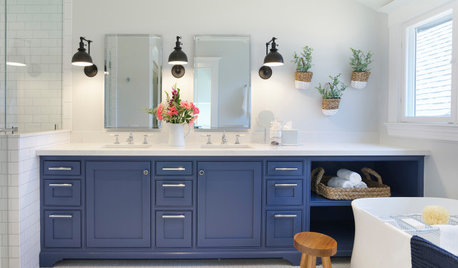
TRENDING NOWThe 10 Most Popular Bathroom Makeovers of 2020
Smart layouts, stylish materials and pops of color define the most-viewed stories from our Bathroom of the Week series
Full Story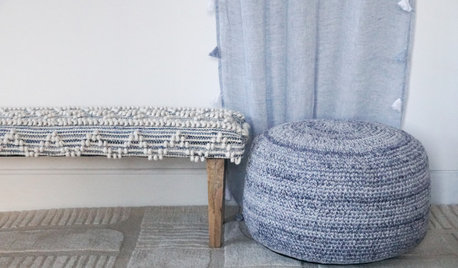
EVENTS6 Decorating Trends at the 2020 Atlanta Furnishings Market
Sustainability was a focus at the January trade show, and product colors emphasized classic blue and warm neutrals
Full Story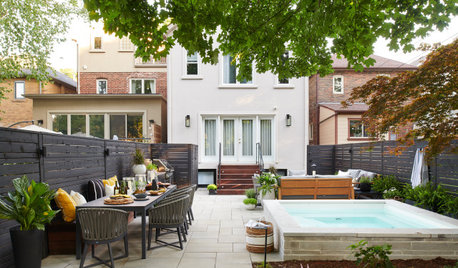
TRENDING NOWThe 10 Most Popular Patio and Deck Tours of 2020
The most-read stories from our Patio of the Week series show clever ways outdoor areas can create more living space
Full Story
TRENDING NOWThe Most Popular Kitchen Tours of 2020
Lots of white and wood, high-contrast style and smart storage made these the most-read kitchen stories of the year
Full Story
EVENTSThe Latest Looks for Cabinets at IBS and KBIS 2020
White and wood finishes dominated at the trade show, but companies also displayed black, blue, green, gray and more
Full Story
EVENTS8 Kitchen and Bathroom Trends From KBIS and IBS 2020
Dark colors, transitional style and personalization were featured at the U.S. kitchen and bath industries’ biggest event
Full Story
EVENTSThe Latest Trends in Kitchen Faucets at KBIS 2020
Faucets with professional looks and functionality, as well as accessory faucets, were featured at the recent trade show
Full StorySponsored
More Discussions



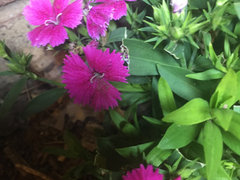

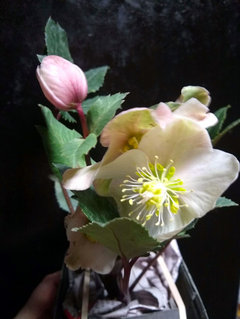



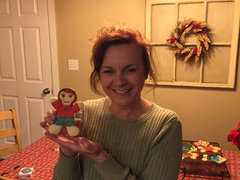


Megan Huntley